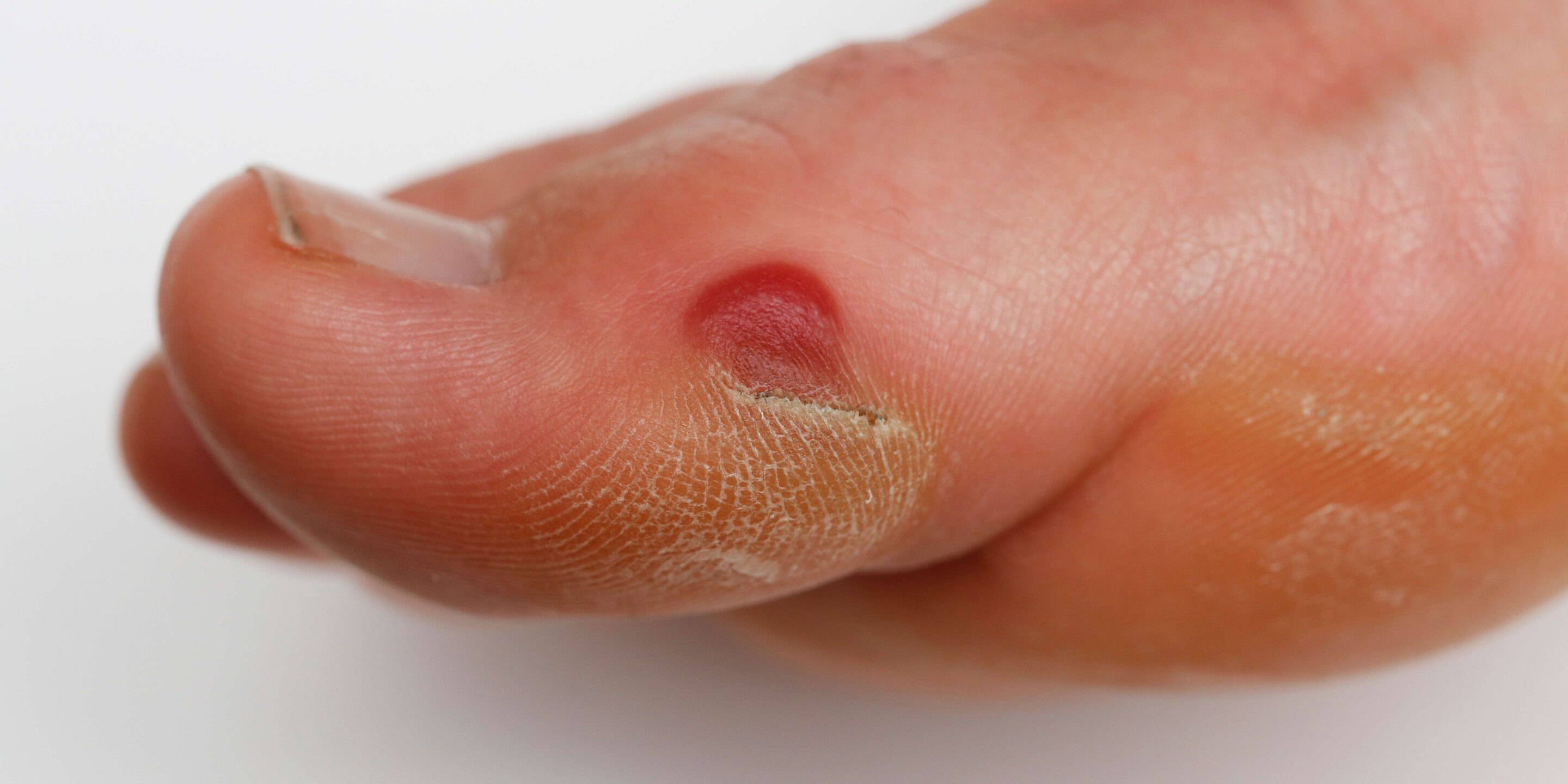What to Do [and Not Do] for Treating a Blood Blister
Blood blisters, often an unexpected consequence of friction and pressure on your feet, can be both painful and inconvenient. Distinguished from ordinary blisters by the presence of damaged blood vessels, these blisters exhibit a dark red or purplish hue. In this blog, we will delve into the essential do’s and don’ts for treating blood blisters, shedding light on their causes and providing valuable insights into effective care.
Understanding the Causes of Blood Blisters
Blood blisters can emerge in areas subjected to excess pressure and friction, commonly forming in bony regions but also making an appearance in softer areas. Whether you lead an active lifestyle, engaging in activities such as walking, running, or dancing, or find your feet confined in ill-fitting shoes, you might be susceptible. Additionally, intense pinching of the skin can lead to the formation of blood blisters.
Strategic Approaches to Blood Blister Care
DO:
- Elevate and Ice Your Blister: One of the first steps in blood blister care is to reduce swelling by elevating the affected area as soon as possible. Apply an ice pack, wrapped in a protective barrier, to alleviate pain, particularly when the blister results from pinching.
- Bandage Your Blister: Protect your blister from friction and pressure by utilizing adhesive bandages for smaller blisters. Larger, protruding blisters may benefit from moleskin bandages, with a hole cut to fit over the blister, followed by an additional layer of standard adhesive bandage for added protection.
- Clean a Broken Blister: If the blister ruptures, gently clean the wound with antiseptics to prevent infection. Apply antibacterial cream or ointment, followed by proper bandaging to facilitate a smooth healing process.
DON’T:
- Lance Your Blood Blister: Avoid breaking the skin, as it heightens the risk of infection and scarring. Allow the blister to dry and flatten naturally whenever possible.
- Peel Away Skin Over the Blister: Resist the urge to remove loose or ruptured skin, as it serves as a protective layer over the healing wound.
- Wear Shoes that Can Worsen Your Blood Blister: Opt for breathable shoes with adequate toe room to minimize friction. Consider open-toed shoes or comfortable, fitted sneakers to alleviate pressure.
Exploring Additional Blood Blister Insights
Beyond the immediate care and treatment of blood blisters, gaining additional insights can contribute to a more holistic understanding of these painful occurrences.
Prevention Strategies
Preventing blood blisters involves adopting proactive measures to minimize friction and pressure on the feet. Choose footwear that fits well and provides ample support. Consider using cushioned insoles to reduce impact during physical activities. Moreover, wearing moisture-wicking socks can help keep the feet dry, reducing the likelihood of friction-induced blisters.
Recognizing Underlying Conditions
In some cases, recurrent blood blisters may be indicative of underlying health conditions. Consult with our experienced team if you experience frequent or severe blood blisters, as they may be associated with issues such as vascular disorders or autoimmune conditions.
Foot Hygiene Practices
Maintaining good foot hygiene is essential for preventing infections and promoting overall foot health. Keep your feet clean and dry, paying attention to spaces between toes. Moisturize regularly to prevent skin dryness and cracking. These practices can contribute to the prevention of conditions that might lead to blood blister formation.
Footwear Selection Tips
Choosing the right footwear is paramount in preventing blood blisters. Ensure that your shoes provide adequate support, especially if you engage in activities that exert additional pressure on your feet. Avoid shoes that are too tight or too loose, as both can contribute to friction and blister formation. Regularly inspect your shoes for signs of wear and tear, as damaged footwear may exacerbate the risk of blisters.
When to Seek Professional Help
Contact us if:
- The pain is severe and persistent.
- Excessive warmth is felt around the blister.
- Redness or red streaks are observed, indicating a potential infection.
- You have diabetes, as foot injuries can escalate quickly without proper attention.
Seeking Swift Relief and Long-Term Solutions
Are you grappling with a painful blood blister? Acting promptly is crucial for swift relief and long-term solutions. Schedule an appointment with our specialized team at Advanced Foot & Ankle Centers of Illinois. Your comfort and well-being are our top priorities.
Holistic Foot Health for Long-Term Well-Being
Understanding and effectively treating blood blisters involves a multifaceted approach that encompasses immediate care, prevention strategies, and awareness of underlying conditions. By following the dos and don’ts outlined by our knowledgeable team, individuals can take proactive steps to address blood blisters promptly and minimize the risk of recurrence.
For those seeking specialized care and long-term solutions, Advanced Foot & Ankle Centers of Illinois stands ready to provide expert guidance and personalized treatment plans. Don’t let blood blisters impede your comfort and well-being – take the proactive step of scheduling an appointment with our dedicated team. Your feet deserve the best care, and we are here to ensure you receive it. Swift relief and long-term solutions await – contact us today.

